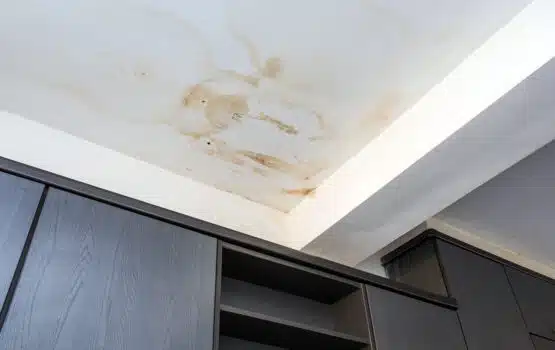In recent years, growing concerns about flammable cladding have raised serious questions about building safety across Australia. Following global incidents that exposed the risks of non-compliant materials, state governments, particularly in New South Wales, have taken decisive action.
One such effort is Project Remediate NSW, a government-led initiative to replace flammable cladding and restore public trust in multi-residential buildings. MJ Engineering Projects is proud to have played a pivotal role in this mission, contributing engineering expertise to ensure safe, compliant, and long-term solutions.
In this post, we’ll explore the scope of Project Remediate NSW and MJ Engineering Projects’ role in its success. We’ll discuss the different types of non-compliant cladding, the methods used to identify them, and the crucial steps taken to ensure safe removal and replacement. If you’re a building owner, consultant, or simply concerned about building safety, this guide will give you a clearer understanding of what’s involved in effective remediation.
What Is Project Remediate NSW?
Launched by the NSW Government, Project Remediate is a voluntary program offering support to owners’ corporations of residential apartment buildings with high-risk cladding. The initiative provides access to expert consultants, project management teams, and 10-year interest-free loans to fund NSW cladding remediation.
The aim is clear: identify non-compliant, combustible cladding and carry out safe, lasting remediation that complies with Australian building codes and safety standards.
MJ Engineering Projects’ Role in Project Remediate
MJ Engineering Projects was engaged to deliver comprehensive technical services across more than 70 buildings. These services included:
- Desktop review of building documentation: Analysing plans, construction records, and architectural documents to identify areas of concern.
- Identification of panels for investigation: Determining which cladding elements warranted physical inspection or testing.
- Instructive investigations: On-site investigations to examine substrates, subframes, and concealed construction issues.
- Laboratory testing: Assessing the combustibility of various cladding materials.
- Cladding investigation reports: Delivering detailed documentation that outlined findings, remediation requirements, and compliance gaps.
Thanks to our expertise and meticulous approach, MJ Engineering Projects helped clients and governing bodies make informed decisions about the scope and strategy of remediation projects. Our work ensured that each building received a tailored, technically sound remediation plan.
Understanding the Risks of Non-Compliant Cladding
Combustible cladding, particularly Aluminium Composite Panels (ACP) with polyethylene cores and certain foam-based products, can significantly increase the rate of fire spread. These materials, when improperly installed or used contrary to fire engineering principles, can contribute to catastrophic outcomes. In Australia, incidents such as the Neo200 building fire in Melbourne (2019) and the Lacrosse fire (2014) drew national attention to this issue.
By identifying and facilitating non-compliant cladding removal in Australia, Project Remediate has directly reduced these fire risks, enhancing occupant safety and community resilience.
Building Facade Remediation Australia: A Collaborative Process
Successful building facade remediation in Australia requires more than just removing panels. It involves a comprehensive understanding of structural engineering, material science, fire regulations, and aesthetic considerations. At MJ Engineering Projects, our multi-disciplinary approach ensures every step of the remediation journey is addressed:
- Initial review: Conducting due diligence through desktop reviews and early investigations.
- Material testing: Leveraging NATA-accredited labs to determine material compliance.
- Detailed reporting: Creating actionable reports for builders, owners, and certifiers.
- Collaborative planning: Working alongside project managers, architects, and construction teams.
- Implementation support: Providing ongoing technical guidance throughout replacement works.
Our team takes pride in offering end-to-end support, enabling clients to navigate complex technical and regulatory landscapes with confidence.
NSW Cladding Remediation Is More Than Compliance
Though compliance is the foundation, true remediation goes beyond ticking boxes. NSW cladding remediation is about restoring the integrity of a building and the peace of mind of its occupants. It’s about future-proofing buildings to withstand stricter standards and evolving fire safety expectations.
By working with MJ Engineering Projects, clients access not just engineering expertise, but a partner who understands the real-world implications of building safety. We view every project as an opportunity to improve not only physical structures, but the lives of those within them.
Building Safety Australia
Across the country, building safety in Australia has become a renewed focus for government agencies, engineers, developers, and property owners. While NSW has been at the forefront through Project Remediate, other states such as Victoria and Queensland have also launched their own initiatives. However, the success of any program hinges on the technical rigour and commitment of those involved.
MJ Engineering Projects brings that level of professionalism to every assignment. Whether we are testing cladding samples in Sydney or conducting structural reviews in regional NSW, our goal remains the same: to raise the standard of building safety in Australia and create a more secure built environment.
Why Choose MJ Engineering Projects?
With years of experience in remedial engineering, MJ Engineering Projects offers unmatched capability in cladding risk assessment, material testing, and structural remediation. Our strength lies not only in our technical knowledge but in our personalised approach. We work closely with stakeholders, builders, owners’ corporations, government departments, and consultants, to deliver clear, actionable outcomes.
When you choose us, you choose:
- Evidence-based assessments.
- Transparent, detailed reporting.
- Commitment to safety and compliance.
- Proven experience in complex remediation projects.
Final Words
The journey to safer buildings is ongoing, but with programs like Project Remediate and dedicated professionals driving them forward, the future looks brighter. At MJ Engineering Projects, we are honoured to be part of this transformation.
In conclusion, cladding remediation is a vital step in restoring trust and safety in our built environment. Our continued work in Project Remediate NSW reflects our commitment to excellence, safety, and innovation in the engineering space.
If you’re seeking expert guidance in identifying, investigating, or replacing hazardous cladding, MJ Engineering Projects is ready to help. Interested in learning more? Contact us to discuss how we can support your cladding remediation needs.


